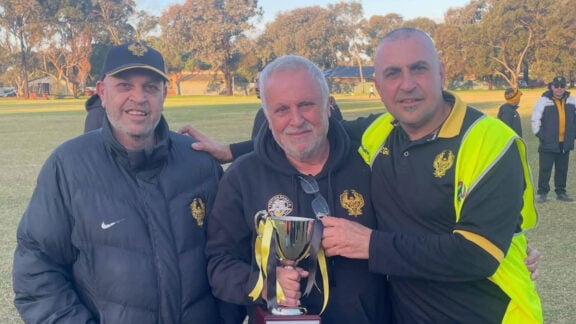As an Australian of non- English speaking (Greek- Cypriot) background I celebrated Australia Day on January 26. I did so not because I have an attachment to that date but because I have an attachment to Australia, which has been my home since I was six years old.
But I am also mindful that January 26, 1788, represents the date of the first British colonial settlement in Australia. Non-British background Australians have difficulty relating to this event.
The British settlers perpetrated injustices against Australia’s Indigenous peoples, but they also sought to exclude other races.
White Australia commenced within the colonies by excluding most non- British settlers and by designating Australia as terra nullius thus excluding Indigenous peoples as well.
When the Australian nation was established on January 1, 1901, the Constitution did not recognise Indigenous peoples.
Not surprisingly, one of the first acts of the new parliament was to also formalise the White Australia policy to limit non-white immigration to keep Australia “British”. This law remained in place for almost 60 years.
For those wishing to change Australia Day to January 1, think again. That date represents the establishment of a White Australian federation. As a migrant of non- British background, I find it hard to relate to either January 1 or 26 as an Australia Day. And I understand why Indigenous peoples find them hurtful as well.
Let me outline some of the injustices and challenges of non- English speaking migrants who managed to get to Australia during those first 60 years of federation.
Some of them came via a loophole because they were holding British passports issued in other British occupied colonies. A significant number of Greek Cypriots came to Australia in this way following federation.
The Cyprus Community of Melbourne and Victoria of which I am president, commissioned a book by Professor Anastasios Tamis, which tells the stories of Cypriot migrants from those early years right up until today.

Their early stories are a window into the struggles and racism these non-British migrants experienced.
One of the stories in the book is about Spyros Kyriacou, who migrated to Australia on December 2, 1926:
“When I arrived, I met my brother in the Murray. He was cutting timber with an axe. Later we were employed by a local farmer to pick string beans. We were earning three shillings for a large sack. Then we were employed 24 miles inside the forest in the construction of a rural road. That job was inhumane. We camped with several other migrants in the open. We did not have provisions. The water holes were infested with mosquitoes, there were millions.
The boss was a very harsh man. Later, I moved to Orbost. I cleared large farms with the axe. I shared a hut with my mates. The cold was unbearable.”
When a new Australian Prime Minister was elected, he ordered that priority for employment be given to Australians.
It was a most difficult period … the unions systematically opposed the fact that “foreigners who could not speak a word of English were being taken on, while Australian workmen of good standing were forced to walk the streets”.
Injustice and prejudice in Australia was not just against our Indigenous populations. Those injustices are rightly being recognised today, but a word should also be spared for the injustices against other non-British settlers in the early years, which were no less severe. They, too, are part of Australia’s history.
But back to Australia Day. It seems to me that the division between colonialist occupiers and Indigenous peoples does not reflect the diverse history or character of Australia. Today’s Australia is a modern, multicultural nation. It is made up of a maturing British culture and more than 200 other valued cultures and it has a special place for Aboriginal culture.
One of the most important historical changes took place on March 9, 1966, with the announcement by the Harold Holt government that it would remove the White Australia policy.
The Holt changes were depicted in the parliament by Sir Keith Wilson in this way: “From now on there will not be in any of our laws or in any of our regulations anything that discriminates against migrants on the grounds of colour or race.’ This was not quite the case as prospective migrants still had to get through difficult tests to establish that they were worthy, including ability to speak English or another European language. But it was nevertheless an important step forward.
Another important change came on September 17, 1973 when the Australian Citizenship Act received assent under the Whitlam government, which removed discrimination in migrant selection and allowed migrants to obtain citizenship, regardless of race, colour or creed.
If we want to bring Australians together in celebrating a national day that represents progress in eliminating racism and establishing the nation as a great multicultural democracy, we could do far worse than choosing March 9 or September 17, which is already celebrated as Citizenship Day.
Theo Theophanous is a former Victorian Labor Minister and commentator.








